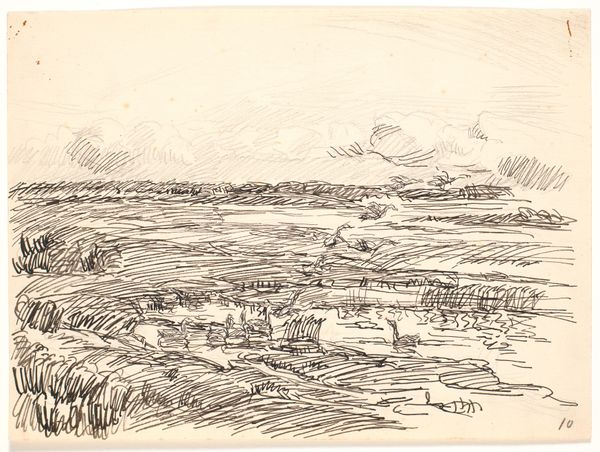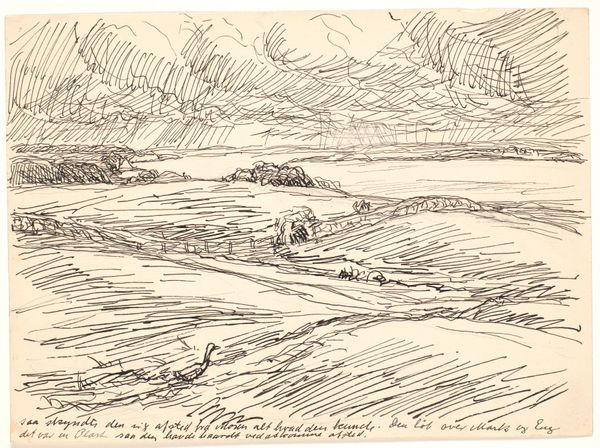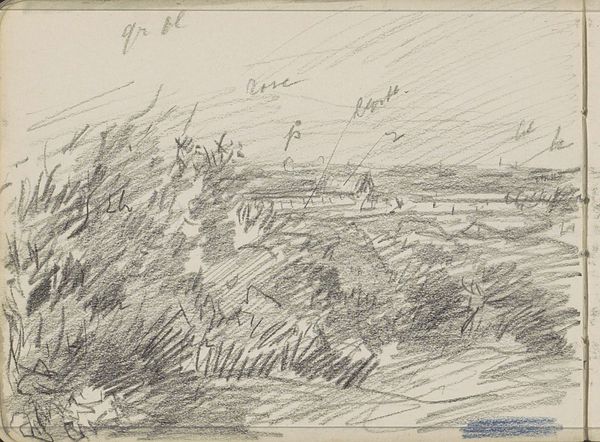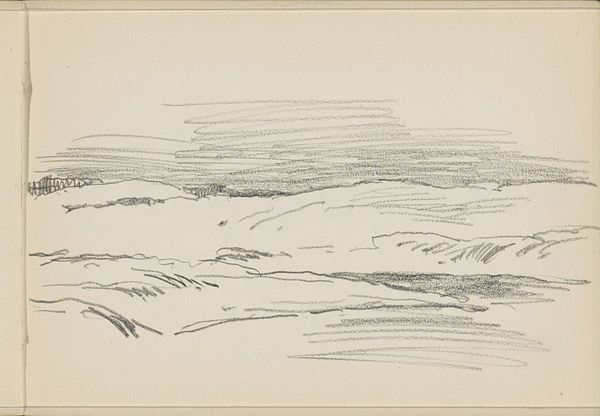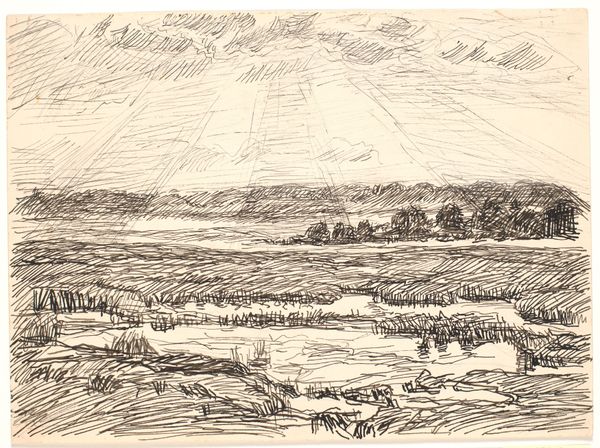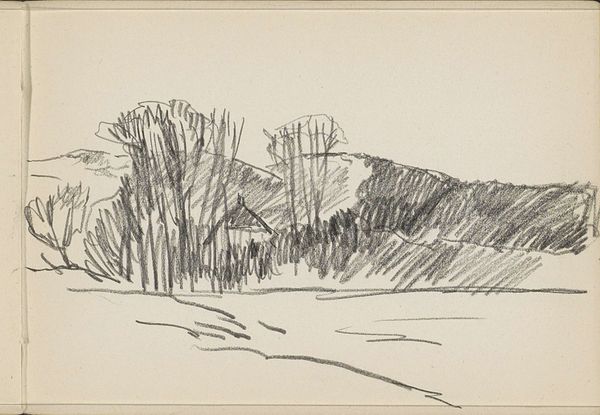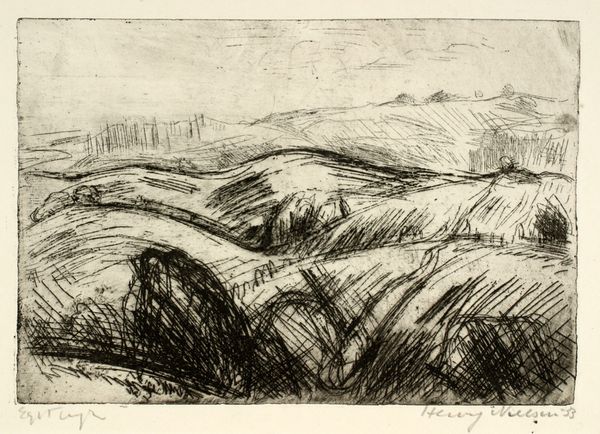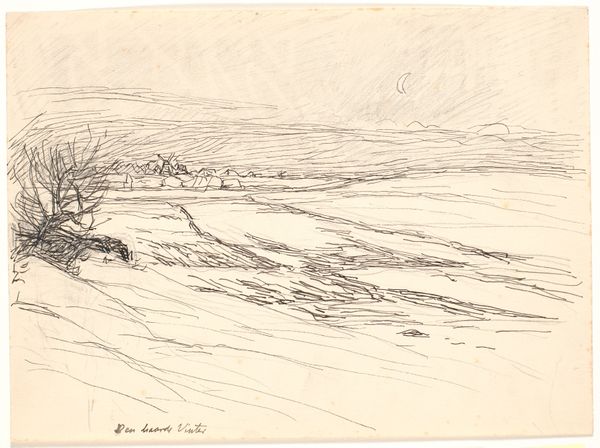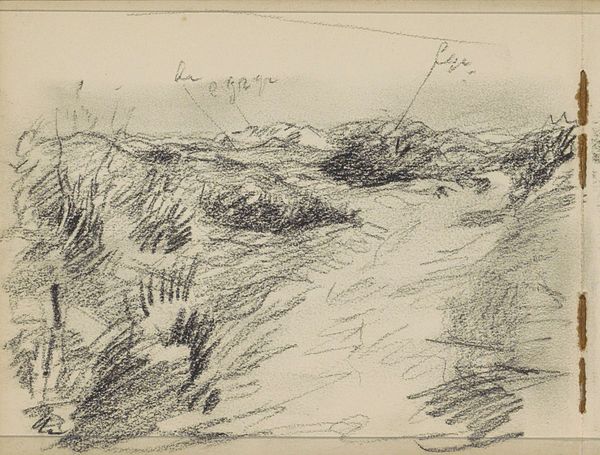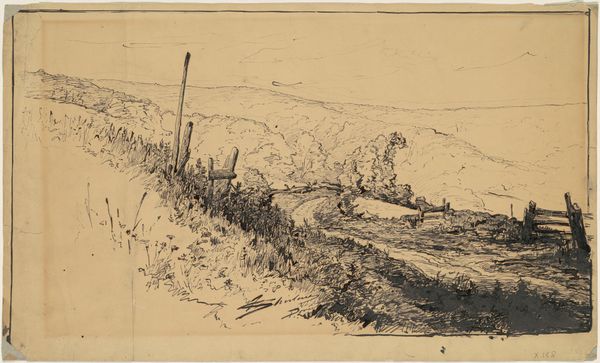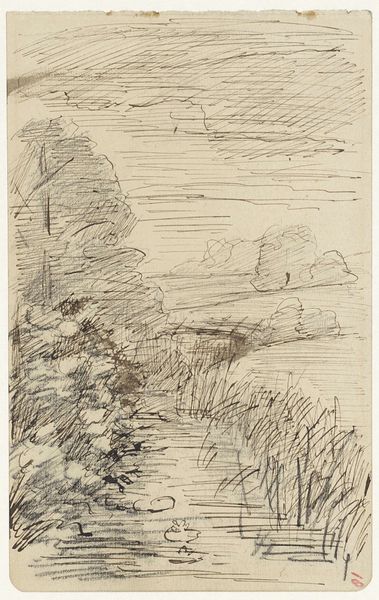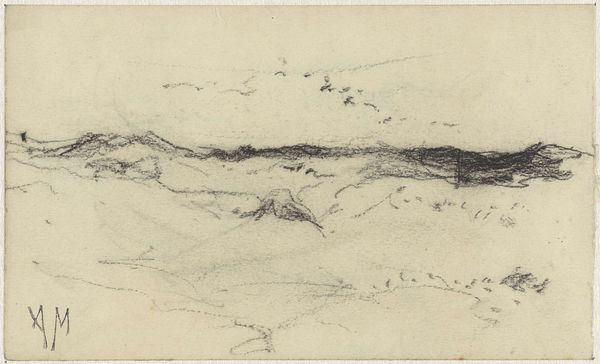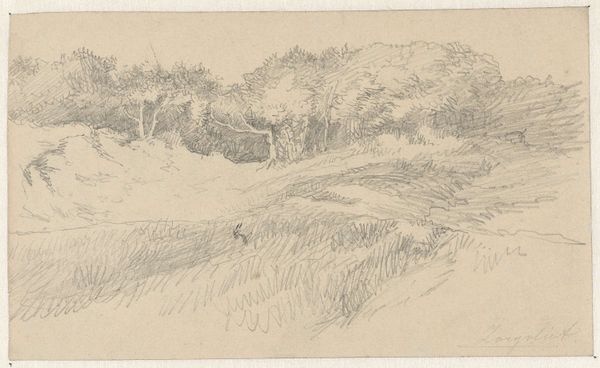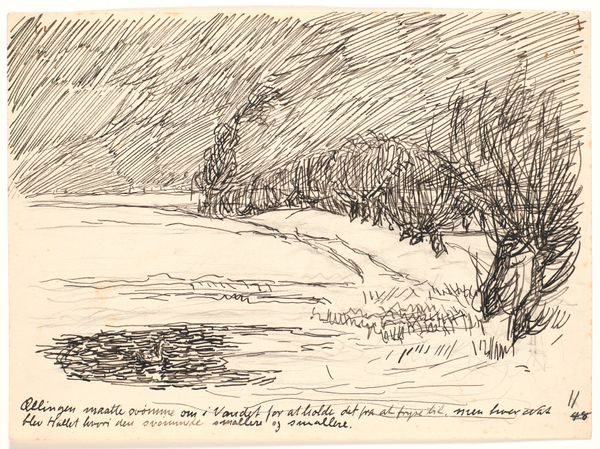
drawing, ink, pen
#
drawing
#
ink drawing
#
pen sketch
#
landscape
#
ink
#
pen
Dimensions: 255 mm (height) x 351 mm (width) (bladmaal)
Curator: Standing before us is "Landskab," a landscape drawing rendered in ink and pen by Christian Kongstad Petersen in 1918. The artwork currently resides at the SMK, the National Gallery of Denmark. Editor: My first thought? A raw, almost violent energy. The strokes are so frantic, they remind me of the desperate scribbles you make during a nightmare you're trying to forget. Curator: It’s intriguing that you interpret the marks that way, it immediately struck me as wind, specifically, a relentless, constant wind implied from Petersen’s frantic scribbles, the sky as turbulent, laden with heavy significance beyond the mere atmospheric conditions of an unremarkable afternoon. It evokes the symbolic weight we often find in the "sky" of Northern Romanticism paintings. Editor: Wind is a good interpretation, a persuasive reading! But it could also read, on a deeper symbolic level, of being under pressure and constrained—almost like the feeling of a dark fate bearing down, ready to make quick work of you and whatever fragile bit of cultivation you imagine is progress. And then you look to the land as equally agitated and almost equally yielding under that pressure... Curator: Yes! But in yielding there's also resilience, a tenacious holding on to life that makes landscape art so interesting, that eternal cyclical idea... Speaking of yielding, look how the horizon offers only the barest relief. This constant pressure could be symbolic. It was produced in 1918. Europe at war? Post-war? Loss of faith, perhaps, in previous value structures? Editor: Exactly. Post-war landscapes are almost always traumatized, as though nature herself absorbs the collective psychic injuries. The bare ink underlines the sparseness and exposure of the subject. Nothing hidden or held back from the experience. I wonder what Petersen was channeling... Was he capturing something seen, something remembered, something imagined? Or perhaps all three tangled together into an emotional map? Curator: A tangle. Yes. A beautiful, if somewhat harrowing, tangle. The act of observation intertwined with personal memory... It creates this incredibly tense piece—one I will contemplate in detail. Editor: Absolutely, the symbols invite that continued observation, even dare I say a type of archeological inquiry for a deep understanding. The type that has long forgotten its origin...fascinating.
Comments
No comments
Be the first to comment and join the conversation on the ultimate creative platform.
